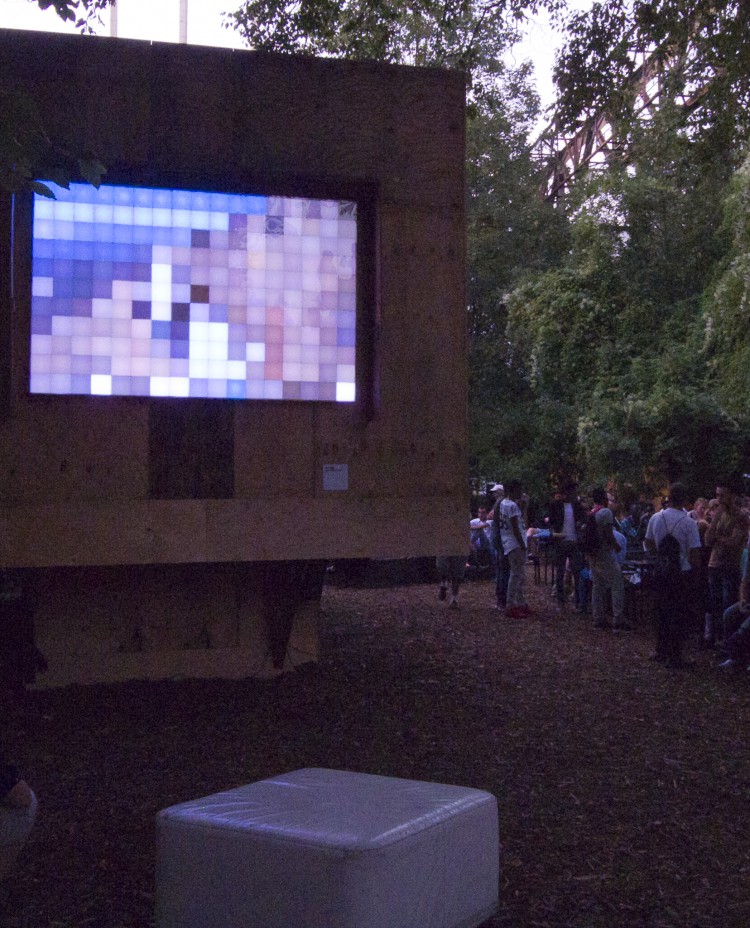
Drones around Hollywood
LED installation 240 x 16 cm, Animation 7:21 min. 2015.
Even the most important events in our lives are no longer seen with the naked eye, they are now seen through our tv-, computer- and smart phone-screens. The series of works that Drones Around Hollywood is part of, adresses this phenomena directly, as they are only recognizable as you see/hold up your cell phone in front of the screen. The large LED screen shows a very, very pixelated film of the Hollywood sign, taken by a drone circling the the mother of all signs, a sign that has come to signify both an area – now known as Hollywood, as well as the commercial film industry. All this because a real estate developer in 1923 put up a sign to advertise his land development.
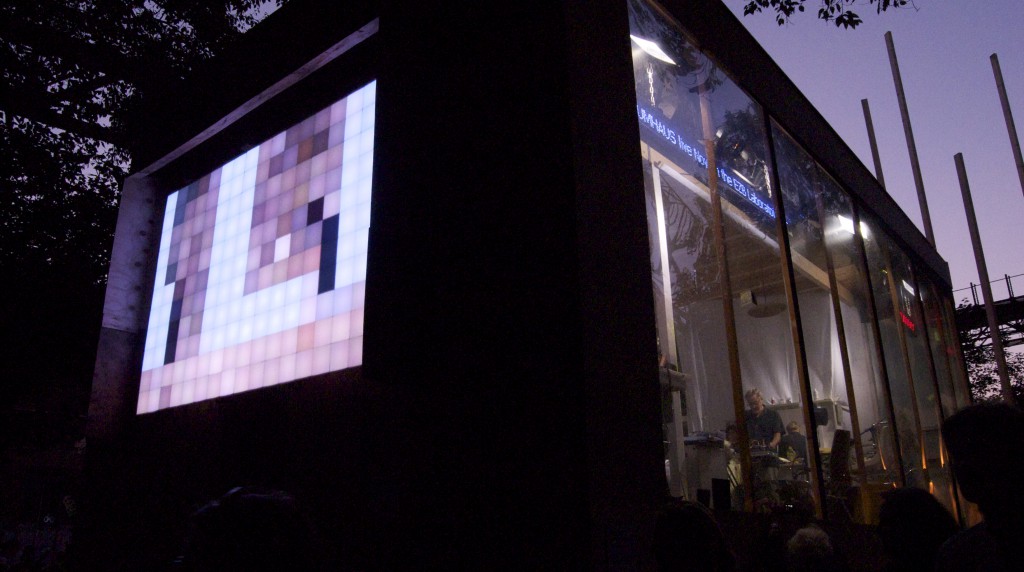 Exhibition visitors and museum guests holding mobile phones to take pictures or film snippets is seen everywhere, sometimes to an extent that it is difficult to walk around without being in someones picture frame. The large LED screen show a very, very pixelated film of the Hollywood sign, taken by a drone circling the screen. The work creates a fucked-up mix of references to voyerism, paranoia, movies and real estate development. The work responds to the fact that we live in a post-mobile phone- and post-internet-era, that to some extent defines content and form in teenagers lives as well as in academic discourses.
Exhibition visitors and museum guests holding mobile phones to take pictures or film snippets is seen everywhere, sometimes to an extent that it is difficult to walk around without being in someones picture frame. The large LED screen show a very, very pixelated film of the Hollywood sign, taken by a drone circling the screen. The work creates a fucked-up mix of references to voyerism, paranoia, movies and real estate development. The work responds to the fact that we live in a post-mobile phone- and post-internet-era, that to some extent defines content and form in teenagers lives as well as in academic discourses.
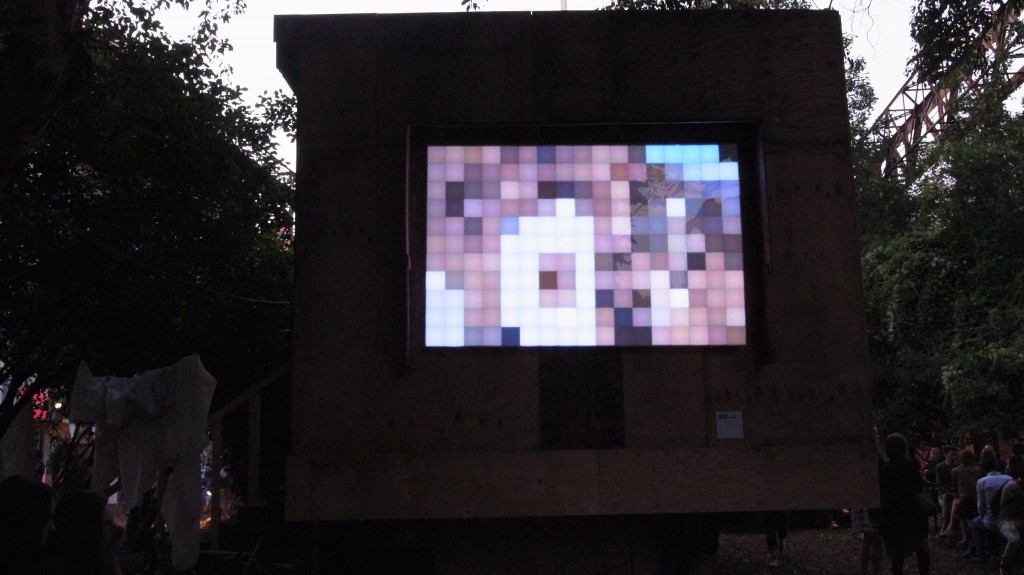 The sign Hollywoodland was initially put up in 1923 as advertisement for a local real estate development, however, as the the sign stayed up and the last syllable -land got lost, the Hollywood – sign has become emblematic of not just the area but the city2 and the name has become the definition of a particular kind of film production (in Los Angeles). As the content of the work Drones Around Hollywood is dealing with electronic phenomena, it is only apt that the media is electronic as well.
The sign Hollywoodland was initially put up in 1923 as advertisement for a local real estate development, however, as the the sign stayed up and the last syllable -land got lost, the Hollywood – sign has become emblematic of not just the area but the city2 and the name has become the definition of a particular kind of film production (in Los Angeles). As the content of the work Drones Around Hollywood is dealing with electronic phenomena, it is only apt that the media is electronic as well.
As our society is developing, the psychic delusions are developing as well in response to historic as well as technical developments. In 1840 the french psychologist Félix Voisin in the parisian mental institution Bicetre counted 14 patients claiming to be Napoleon Bonaparte. Today a common delusion is to be the main charater in a reality show, a condition that has its own diagnosis: The Truman Show Delusion3. The diagnosis gets its name from the film, where the main charater Truman Burbank is growing up in a reality show built around him, and where everyone else in the show are actors. The fact that The Truman Show Delusion has become such a recurring abberation, is presenting normality and the doctors with a problem: as the patient claims that the telephone is surveilling him or she states that there are thousands of cameras on her every move, then it is impossible to deny objectively. The overlap between reality and delusion is considerable, and ideas that previously would be sure signs of insanity are today actually very likely true. Sadly in this case the delusion supplies the framework, and the culture fills in the details.
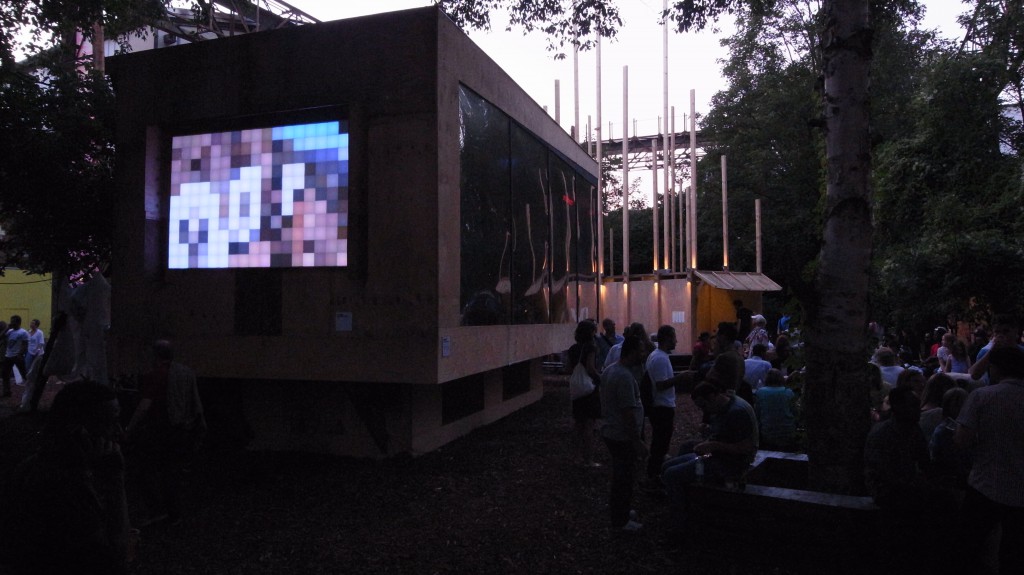
Apart from the The Truman Show, surveillance and the voyeur and has been the a central theme in movies from Peeping Tom by Powell, Hitchcock’s movies Psycho and Rear Window, Lynch’s Blue Velvet, Mendes’ American Beauty, de Palma’s Body Double and Coppola’s The Conversation, but the list goes on and on. As the film industry is such a big part of our common references and the idea of the voyeur and his object is such a strong and recurring idea in movies, Hollywood is fuelling this particular kind of cultural drive towards an insane lust for images.
Niels Bonde 2015.
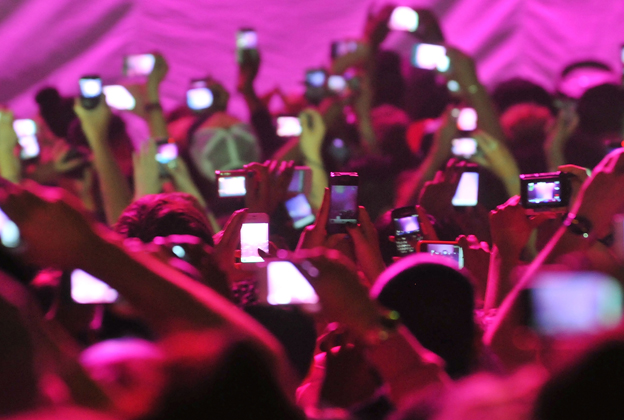
1 http://www.rollingstone.com/music/news/the-10-most-annoying-concert-behaviors-20130114
2 http://www.ninalp.com/bfarts/Media/Venturi_Learning_from_Las_Vegas.pdf.pdf
3 http://www.newyorker.com/magazine/2013/09/16/unreality-star